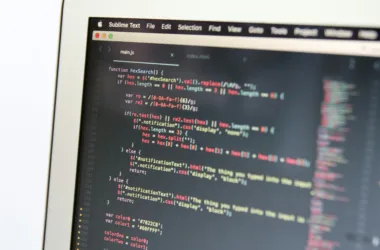Ensuring that your software development process complies with the Health Insurance Portability and Accountability Act (HIPAA) is crucial for protecting patient data and maintaining the trust of your clients.
This guide provides a detailed roadmap to achieving HIPAA compliance in software development, covering key aspects from understanding the regulations to implementing the necessary security measures.
Understanding HIPAA Compliance
What is HIPAA?
The Health Insurance Portability and Accountability Act (HIPAA) is a U.S. law designed to provide privacy standards to protect patients’ medical records and other health information provided to health plans, doctors, hospitals, and other healthcare providers.
Key HIPAA Requirements for Software Development
- Privacy Rule: Protects the privacy of individually identifiable health information.
- Security Rule: Sets standards for the security of electronic protected health information (ePHI).
- Breach Notification Rule: Requires covered entities to notify affected individuals, the Secretary of Health and Human Services, and, in some cases, the media of a breach of unsecured PHI.
- Omnibus Rule: Strengthens the privacy and security protections for health information established under HIPAA.
Steps to Develop HIPAA-Compliant Software
1. Conduct a Risk Analysis
Perform a thorough risk analysis to identify potential vulnerabilities in your software that could compromise ePHI. Document all findings and develop a plan to mitigate these risks.
2. Implement Administrative Safeguards
- Security Management Process: Implement policies to prevent, detect, contain, and correct security violations.
- Workforce Security: Ensure all staff members are properly trained on HIPAA compliance and security procedures.
- Information Access Management: Restrict access to ePHI to only those employees who need it to perform their job functions.
3. Implement Physical Safeguards
- Facility Access Controls: Limit physical access to the facilities where ePHI is stored.
- Workstation Use and Security: Define the proper use of workstations and implement physical safeguards to restrict access to ePHI.
- Device and Media Controls: Implement policies for the disposal and re-use of electronic media containing ePHI.
4. Implement Technical Safeguards
- Access Control: Implement technical policies to allow only authorized persons to access ePHI.
- Audit Controls: Record and examine activity in information systems that contain or use ePHI.
- Integrity Controls: Ensure that ePHI is not improperly altered or destroyed.
- Transmission Security: Protect ePHI when it is transmitted over electronic networks.
5. Ensure Compliance with the Breach Notification Rule
Develop a breach notification policy to ensure timely and appropriate responses to any breaches of ePHI. This includes notifying affected individuals, the Secretary of Health and Human Services, and the media when necessary.
6. Regularly Review and Update Policies and Procedures
HIPAA compliance is an ongoing process. Regularly review and update your security measures and policies to ensure they remain effective and compliant with any changes in HIPAA regulations.
Diagram: HIPAA Compliance Workflow
graph TD;
A[Conduct Risk Analysis] --> B[Implement Administrative Safeguards]
B --> C[Implement Physical Safeguards]
C --> D[Implement Technical Safeguards]
D --> E[Ensure Breach Notification Compliance]
E --> F[Regularly Review and Update Policies]Practical Tips for Implementing HIPAA Compliance
Data Encryption
Encrypt all ePHI both in transit and at rest. Use strong encryption methods to ensure that data cannot be read or altered by unauthorized parties.
Secure Authentication
Implement multi-factor authentication (MFA) to enhance security. Ensure that users must provide multiple forms of identification before accessing ePHI.
Regular Audits and Monitoring
Conduct regular audits of your systems and processes to ensure compliance. Use automated monitoring tools to continuously track access and modifications to ePHI.
Employee Training
Provide ongoing HIPAA compliance training for all employees. Ensure that everyone understands their responsibilities and the importance of protecting patient information.
Vendor Management
Ensure that all third-party vendors who may have access to ePHI are HIPAA compliant. This includes signing Business Associate Agreements (BAAs) with all relevant vendors.
Case Studies
Case Study 1: Healthcare Application Development
A healthcare startup developed a mobile application to help patients manage their medication schedules. To ensure HIPAA compliance, they:
- Conducted a comprehensive risk analysis.
- Implemented strong encryption protocols for all patient data.
- Used multi-factor authentication for user access.
- Trained all employees on HIPAA regulations.
- Regularly audited their systems for security vulnerabilities.
As a result, they successfully launched the application with full HIPAA compliance, gaining the trust of patients and healthcare providers.
Case Study 2: Cloud-Based Health Records System
A cloud service provider developed a platform for storing electronic health records (EHRs). Their HIPAA compliance strategy included:
- Enforcing strict access controls to limit data access to authorized personnel.
- Utilizing secure data transmission protocols to protect data in transit.
- Conducting regular security audits and penetration testing.
- Signing BAAs with all third-party vendors involved in data handling.
- Providing continuous training and updates on HIPAA compliance for their development team.
This approach ensured the platform’s security and compliance, leading to widespread adoption by healthcare organizations.
Future Trends in HIPAA Compliance
Artificial Intelligence and Machine Learning
AI and machine learning can enhance HIPAA compliance by identifying potential security threats and automating risk management processes. These technologies can help in detecting anomalies and breaches in real-time, providing a proactive approach to security.
Blockchain Technology
Blockchain offers a secure method for managing and sharing ePHI. Its decentralized nature ensures data integrity and transparency, making it a promising tool for maintaining HIPAA compliance.
Telehealth and Remote Monitoring
The rise of telehealth and remote patient monitoring presents new challenges for HIPAA compliance. Ensuring secure communication channels and protecting patient data in these settings will be critical as these technologies continue to grow.
Conclusion
Achieving and maintaining HIPAA compliance in software development is an ongoing process that requires a thorough understanding of the regulations, diligent implementation of security measures, and continuous monitoring and updating of policies.
By following the detailed steps and practical tips outlined in this guide, you can ensure your software development process protects patient data, complies with all regulatory requirements, and gains the trust of users.
Regularly reviewing and adapting to new technologies and emerging trends will help keep your practices current and effective. HIPAA compliance not only safeguards sensitive information but also enhances your reputation and reliability in the healthcare industry.






